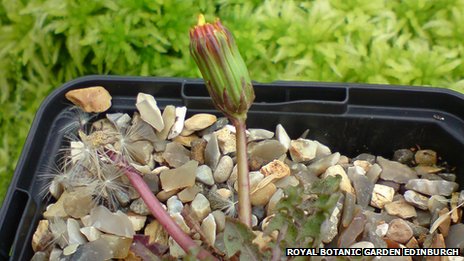
NEWS- New Species of the Dandelion flower discovered
A new species of the dandelion flower has been discovered on a Scottish Island. Botanists from the Royal Botanic Garden Edinburgh (RBGE) and Northumberland have helped being involved in studying the new flower found growing of the isle of Hirta.
It is the largest island in the St Kilda archipelago but has not been inhabited by humans since 1936. The flower may have originated in Iceland but was imported to Scotland possibly by the Vikings or by birds. It has been named after a former RBGE employee.
RBGE said the dandelion which is named, Taraxacum Pankhurstianum, could be one of the rarest flowers in Scotland today. It is apparently eaten by sheep and seabirds.
Jim McIntosh, a recorder of flowers for the Outer Hebrides, collected seeds from four plants two years ago during his survey work on Hirta.
The seeds collected by Mr McIntosh were successfully grown at the garden’s nursery by horticulturist Natacha Franchon and Professor James Richards identified it as a new species.
St Kilda is 41 miles west of the Western isles. The last of the St Kildans abandoned Hirta in August 1930 after years of depopulation and deaths that occurred in a cold winter of 1929. Last year remains of a settlement that could date back to the iron age were found on another island in the archipelago. It was thought that Boreray was only visited by humans to hunt seabirds and to get wool from sheep.
RBGE state the most likely origin of the dandelion is from Iceland where the flower no longer grows.
St Kilda isn’t home only to one of the rarest flowers in Scotland. It is also home to field mice that can grow twice the size of their mainland cousins. Also the island is home to the St Kilda wren.


